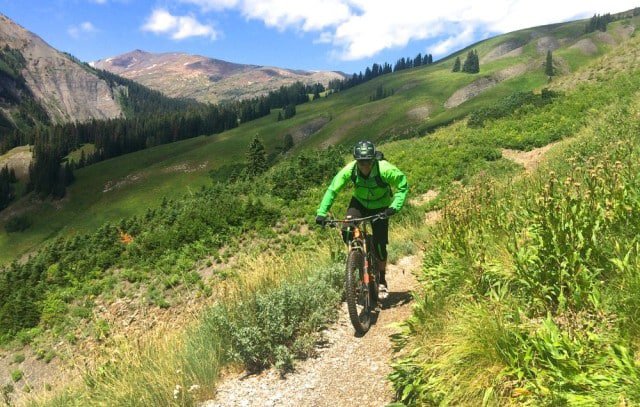First Ride: 2017 Scott Spark
This full-suspension cross country bike gets more trail-friendly in a major revamp.
This full-suspension cross country bike gets more trail-friendly in a major revamp. By Joe Lindsey
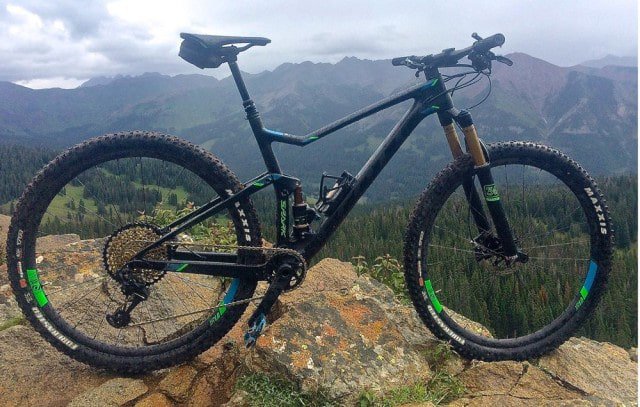
For years, The Scott Spark has been its mainstay XC full-suspension bike, the bike a racer would pick for a tough, technical course where its Scale hardtail wasn’t suited. But it was a big jump from the 100mm-travel Spark 29er with its XC-style geometry to the slacker, 130mm-travel Genius trail bike. That’s important because Scott says that some 60 percent of the Spark’s buyers aren’t racers; they want a light, fast, but capable trail bike for all-around riding.
So with a major redesign for the 2017 model year, Scott turned the new Spark into exactly that, along the way expanding the line from an already broad 17 models to a whopping 39. That includes an expanded RC (Racing Concept) lineup, three new Contessa women’s models, and six plus-size tyre versions (four men’s and two Contessa women’s) with meaty 2.8-inch tyres.
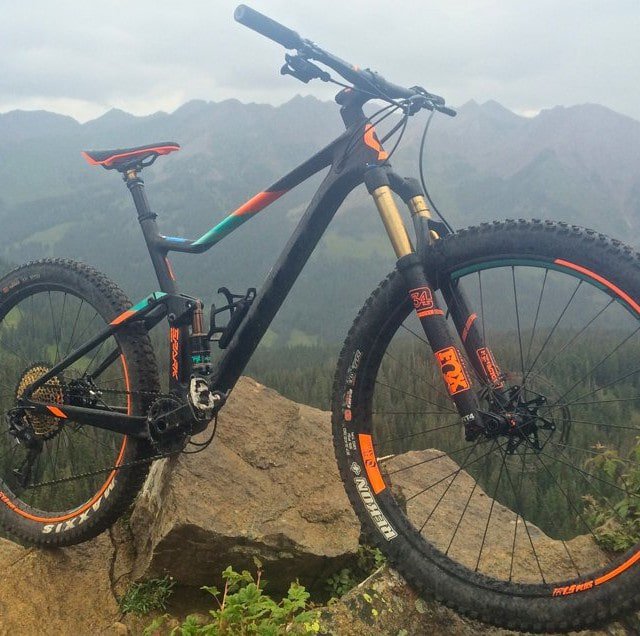
That sounds like a dizzying array of options, and it is, but much of that stems from Scott offering two wheel sizes for many models. In fact, it breaks down pretty neatly:
- The RC line is now three bikes with 29-inch wheels. They’re dedicated racers, with shorter travel (100mm front and rear) and 1x drivetrains; there’s no mount for a front derailleur. Scott had a nice run of luck with the new bikes, winning two Olympic gold medals and World Championships in both the Elite men (Nino Schurter) and U23 women (Jenny Rissveds) this summer.
- The main Spark line has 10 main models in either 29 or 27.5-inch versions. These feature 120mm of travel front and rear and 1x or 2x drivetrains, depending on the model. Where the 2016 version had conventional posts, the entire new line gets droppers from either Fox or Syncros, depending on the model.
- The Contessa line, not including the RC model above, grows to four bikes from one. They’re all 27.5 wheel only, 2x drivetrain, with droppers on all but one model.
- The Plus bikes also grow in number, with four men’s and two women’s models, all in 27-plus tire sizing, with 130mm of fork travel and mostly 2x drivetrains and dropper posts.
All the new sub-lines have their own geometry, as well as some tweaks to the frame to accommodate 1x versus 2x drivetrains. But they share the same basic design overview and features.
The biggest change is a new suspension design. For years, The Spark used a single-pivot suspension with the shock mounted horizontally to the top tube. The new model is technically still a single-pivot, but uses a rocker link design that moves all pivots in line with the seat tube and orients the shock vertically, mounted to the down tube at the bottom bracket.
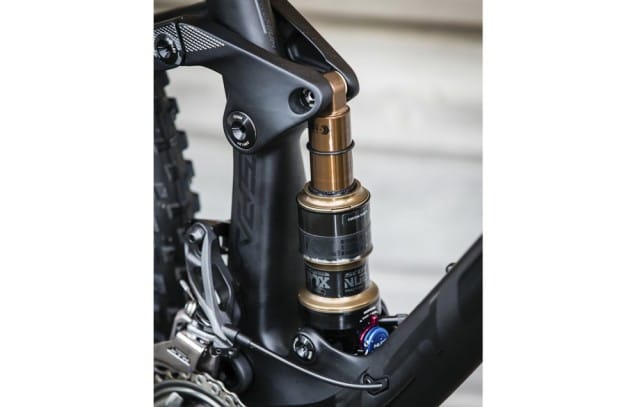
Scott claims there are multiple benefits to the new design, including a higher initial leverage ratio improves small-bump sensitivity and offers better support while pedaling (less bobbing) in the middle of the shock stroke; a lighter top tube, since it no longer needs shock mount reinforcement; and more drivetrain stiffness, thanks to the upside-down shock orientation.
The rocker-link design also freed Scott up to redesign and dramatically lighten the rear triangle. The old version had four distinct pieces with a rear axle pivot and a ton of hardware bolting it all together. The new, pivotless version has two swingarm pieces (in either carbon or aluminum) and dramatically less hardware (some of it moves to the rocker link, but there’s generally less of it, and it’s not as heavy).
Scott also switched up the geometry in a major way, moving to the long-low-slack style we’re seeing on ever more trail bikes. Gone is the high/low bottom bracket setting option of the old Spark, replaced with a single orientation that’s slightly higher than the old high position. But the head tube rakes out more than two full degrees slacker than the old bike even in the low setting. Reach bumps out more than 20mm even in the small size, stack drops about 10mm, and seat angles steepen slightly.
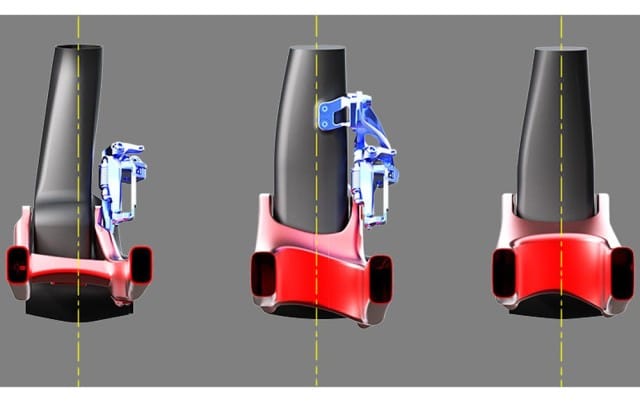
With the Boost axle spacing (148mm rear, 110mm front), Scott was able to dramatically shorten the chainstays (10mm) even as the overall wheelbase grows, and preserve tyre clearance. These figures are specific to the 29er versions of the regular Spark line, but comparisons in the 27.5-inch versions are broadly similar. There’s no real geometry comparison for the Plus bikes, as Scott didn’t have a Plus version of the Spark in its line last year.
The geometry on the Plus versions is similar, with some small-yet-important differences: There’s 130mm of fork travel, as opposed to the standard version’s 120mm. The seat angle is half a degree slacker, with slightly longer chainstays for tire clearance and a longer wheelbase. Reach is almost identical, but stack height, courtesy in part due to the larger tyre volume, increases 25mm even though the head tube is 10mm shorter.
Also updated: the venerable Scale hardtail, which trims to just 849 grams (medium) frame-only, in the top-shelf RC trim. The big story here is the move to Boost spacing, which allows Scott to shorten up the chainstays 13mm. Both the existing RC and Plus versions continue, with more models. Scott remedies an oversight with last year’s Plus models, equipping the 710 and 720 Plus with dropper posts. With slack 66.5-degree head angles, 120mm travel forks and meaty 27.5×2.8-inch Maxxis Rekon tires, these are less race-geek rides and more rowdy singletrack play bikes.
I spent most of my time on the main Spark platform, both the 29er and 27.5 versions. In the park, the Spark seemed a bit undergunned, which was no surprise. On the steep, more technical park-like terrain, the clear pick would be a bike like the Genius LT Plus, with 170mm of travel or even the 130mm travel Genius Plus. Still, I had a fine time on it and never felt it was a bad pick for at least blue trails. (The Spark Plus, with a slacker seat angle and more stack, which position the rider’s weight farther back over the rear wheel, would be a more versatile option.)
In its more natural environment, alpine singletrack, the Spark came alive. Sparks have always climbed well, in part thanks to Scott’s Twinloc suspension remote. Twinloc controls front and rear suspension simultaneously, with a three-position lever that toggles the compression damping from open to pedal platform to full lockout. On a bike with two shifters and a dropper remote, the additional two levers and cables make for something of a complicated dashboard. And Scott acknowledges it’s more popular in the European market, where sections of singletrack are often linked by road climbs where lockout is welcome.
Previous Sparks have been stiff in initial travel, a function of the lower leverage rate that requires more force to get the wheel moving. There’s no mistaking you’re on an XC bike. But with Twinloc flipped to the full open setting, the newer Spark felt much more capable as a trail bike.
During the test ride I wasn’t on a Plus version, rather a Spark 700 Premium with Maxxis’s 27.5×2.35 Forekaster tyres. Gathering speed off the summit on the narrow singletrack, I dropped into a series of switchbacks, rutted to a deep V shape and strewn with washboard bumps. I hit the remote for the Fox Transfer dropper post to get my weight back and pointed the front end down the center of the rut.
The Spark felt totally capable in that kind of terrain; likely far more than the old version would have. The Fox rear shock, a custom Scott tune on the Float series with the EVOL sleeve, soaked up the braking bumps without blowing through its travel, or ramping up to a harsh, locked-out feel you can sometimes find on shorter-travel bikes in very rough terrain. As a slight digression, the larger-volume air cans like the EVOL, or Rock Shox’s Debonair, seem clearly superior to me to their normal-volume counterparts. The suspension feel is markedly better, with improved small-bump sensitivity and solid platform support deeper in the travel. More and more bikes feature these shocks, with good reason.
Lower down, in long sections of flowy, benching singletrack warped through high alpine meadows thick with wildflowers, the suspension felt agile and responsive, compressing quickly to prejump a water bar, and soaking up the odd rock or log in the trail. Near-daily rain since July, including the morning of our ride, made exposed trail sections almost perfectly tacky, but as we descended through groves of evergreens, tree roots and bony sections of glacial-scoured granite were wet and slick. I’m a decent bike handler, but not a great one. I tend to like the long-low-slack feel of modern trail bikes because they seem to improve my control in such situations and give me more confidence against the chance of endo-ing.
There, the Spark wasn’t quite on par with some of the best trail bikes I’ve ridden. The head and seat angles are slightly steeper and put me a bit more forward on the bike than I usually prefer. The setup was a marked improvement over the existing Spark; but it also underlined that the Spark is Scott’s attempt to split the difference between XC and full-on trail bike, and it retains a bit of that character.
In anything less than very technical conditions, though, the bike was admirably balanced: precise in line choice; stout and slack enough to plow through moderate rock gardens and root sections; and efficient for long climbs, even without fully engaging the Twinloc.


